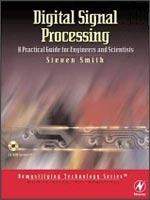 Title: Digital Signal Processing: A Practical Guide for Engineers and Scientists
Title: Digital Signal Processing: A Practical Guide for Engineers and Scientists| Link type | Link | Password |
|---|---|---|
| Mirror | http://mihd.net/sybzc8 | www.freebookspot.com |
| Reupload | http://depositfiles.com/files/ddji01xls | |
| Reupload | http://www.filesonic.com/file/23711987/eleco16.rar | |
| Book | http://uploading.com/files/db54d8aa/075067444Xeleco16B.rar/ | |
| Book | http://www.megaupload.com/?d=FHI7EC0G |